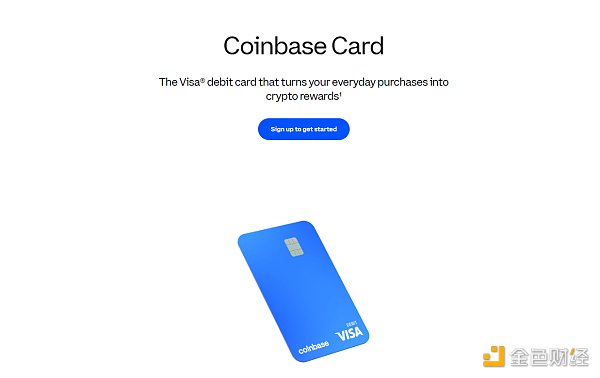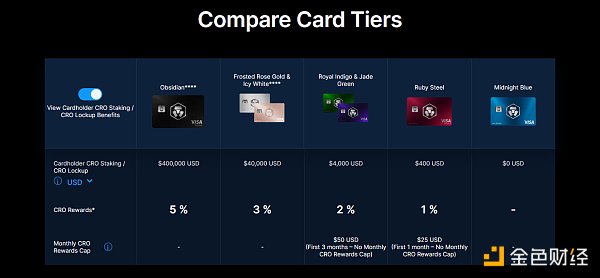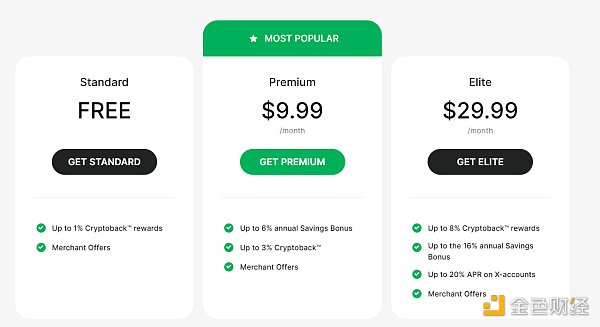Author: MetaHub Research
The emergence of crypto credit cards provides users with a way to seamlessly integrate cryptocurrencies with daily consumption. Whether it is shopping, traveling, or online payments, crypto credit cards enable cardholders to use their crypto assets anywhere credit cards are accepted.
Over the past few years, cryptocurrencies have gradually evolved from a niche investment tool to an important part of the global financial system. With the continuous development of blockchain technology and the increasing popularity of cryptocurrencies, 2024 has ushered in a new financial innovation-crypto credit cards. These credit cards not only break the limitations of traditional credit cards, but also provide users with unprecedented convenience and security by combining decentralized finance (DeFi) and blockchain technology.
The emergence of crypto credit cards provides users with a way to seamlessly integrate cryptocurrencies with daily consumption. Whether it is shopping, traveling, or online payments, crypto credit cards enable cardholders to use their crypto assets anywhere credit cards are accepted.
This innovation not only enhances the actual application scenarios of cryptocurrency, but also brings more liquidity and transparency to the global financial market.
This article will study the development prospects of crypto cards from the perspective of the global consumer index.
Overview of Global Economic Growth

In 2024, the global economy is expected to grow by 3.5%, higher than 3.3% in 2023. Although this growth rate is relatively modest, it still shows signs of recovery in the global economy after a series of challenges. The main driving force behind this growth is the promotion of developing economies and emerging markets, which continue to drive steady growth in the global economy through infrastructure construction, technological innovation and industrialization.
North America's economy is expected to continue to recover in 2024, thanks to strong consumer spending and investment growth, especially in technology and manufacturing. In addition, the stable development of the energy sector and increased exports also provided strong support to the North American economy.
Europe's overall economy still showed signs of recovery despite challenges such as rising energy prices and tight supply chains. EU governments have promoted economic growth through fiscal stimulus policies and reform measures. In particular, investment in green energy and digital transformation has become a new engine of economic growth.
Asia continues to lead global economic growth, with China and India playing a key role as major economies. China has driven sustained economic growth through a high-quality development strategy and technological innovation, while India has enhanced economic vitality through reform measures and infrastructure investment. In addition, the economic growth of Southeast Asian countries is also worthy of attention, as these countries have promoted the process of economic integration through regional cooperation and trade agreements.
Latin America's economy is expected to recover moderately in 2024, benefiting from the rebound in international commodity prices and the advancement of regional integration. Brazil and Mexico, as major economies, have increased their economic growth potential through reform measures and policy adjustments.
Africa's economy continues to show strong growth momentum, benefiting from the demographic dividend and resource development. Especially in East Africa and West Africa, infrastructure construction and agricultural development have become important drivers of economic growth.
The main challenges of the global economy include inflation, geopolitical risks and climate change. Global inflationary pressures remain high, especially driven by energy and food prices. Central banks need to balance economic growth and inflation control through monetary policy adjustments. Geopolitical risks still exist, especially competition between major powers and regional conflicts, which may affect global economic stability. Natural disasters and environmental problems caused by climate change pose long-term challenges to the global economy. Countries need to strengthen cooperation and respond to the impact of climate change through green economy and sustainable development measures.
Global Development Trends of Crypto Credit Card Business
With the recovery of the global economy and the upgrading of consumption, the market size of the crypto credit card business continues to expand. Crypto credit cards refer to credit cards that allow users to use cryptocurrencies for payments and transactions. It is predicted that the global crypto credit card market will reach billions of dollars in 2024, and this growth is mainly due to the popularity of cryptocurrencies and consumers' increased acceptance of digital payment methods.
Crypto credit cards can be divided into two major types: ordinary crypto credit cards and reward crypto credit cards. Ordinary crypto credit cards allow users to use cryptocurrencies for daily consumption and transactions, usually in cooperation with mainstream payment networks such as Visa and Mastercard, enabling users to pay with cryptocurrencies worldwide. Reward crypto credit cards not only allow users to pay with cryptocurrencies, but also provide cryptocurrency-based reward programs, such as users can get cash back or points in cryptocurrencies such as Bitcoin and Ethereum when spending. Such reward programs have attracted a large number of users who want to accumulate crypto assets through daily consumption.
The crypto credit card market can be segmented into BFSI (banking, financial services and insurance), personal consumption and commercial use. The BFSI industry is one of the important markets for crypto credit cards. Financial institutions provide diversified payment and investment options by issuing crypto credit cards to meet customers' needs for crypto asset management. Personal consumption is the largest segment of the crypto credit card market, with a market share of 71.63% in 2022. As consumers' acceptance of cryptocurrencies increases, the personal consumption market will continue to grow rapidly. The application of crypto credit cards in the commercial field is also increasing. Many companies have begun to accept cryptocurrencies as a means of payment. Crypto credit cards provide companies with a convenient and secure payment method.
The innovative application of crypto credit cards is reflected in dedicated cards or hybrid cards, DeFi integration and NFT transactions. Dedicated cards focus on specific uses, such as travel, shopping or online payments, and attract specific user groups by providing offers and rewards for specific consumption scenarios. Hybrid cards combine the functions of traditional credit cards and crypto credit cards, and users can choose to pay with fiat currency or cryptocurrency as needed. The diversification of crypto credit card business is also reflected in the integration with decentralized finance (DeFi) and non-fungible token (NFT) transactions. Some crypto credit card platforms have begun to provide DeFi services such as lending, staking and yield farming, while also supporting users to purchase and trade NFT assets. This versatile crypto credit card meets the diverse needs of users for digital assets.
Credit card companies optimize credit assessment and risk control through big data analysis and artificial intelligence technology. By analyzing consumer behavior and transaction data, credit card companies can more accurately assess credit risk and prevent fraud. Blockchain technology provides a new security solution for crypto credit card business. Through blockchain technology, credit card companies can achieve transparent, secure and efficient payment and settlement processes, and enhance the credibility and security of transactions.
Analysis of major competitors in the global crypto card market
The global crypto credit card market is highly competitive, and major companies are competing fiercely in terms of rates, currency support, and reward mechanisms. Here is an analysis of several major competitors:
Coinbase: Mainly covers the United States and the European Economic Area (EEA). Users pay a monthly fee of 4.95 euros, and the transaction fee rate ranges from 2.69% to 5.49%. Coinbase's advantage lies in its broad user base and good brand reputation.

Crypto.com: It has extensive market coverage in Singapore, the United States, Canada, the Asia-Pacific region, and EU countries. The uniqueness of Crypto.com lies in its staking rights, that is, users can obtain VIP services such as airport lounges by staking Crypto.com tokens (CRO), and can also get subscription cashback for services such as Spotify and Netflix.

Wirex: has operations in Singapore, the United States, Canada, the Asia-Pacific region, and EU countries. Users can choose a monthly fee of 0 to 30 euros, a transaction fee of 2.99%, and mailing fees ranging from 0 to 35 euros. Wirex's flexible fee structure and wide market coverage have enabled it to gain a foothold in the market.

Bitpanda: Mainly operates in the European market, providing euro crypto credit cards. Its overall rate is low, with rates in non-euro areas ranging from 0.25% to 2.5%, and mailing costs 9.9 euros. Bitpanda is unique in that it cooperates with platforms such as Amazon, XPremium, Expedia and Airbnb, providing rich rebate options.

Global Crypto Card Market Development Status
According to Chainalysis's "2023 Global Cryptocurrency Adoption Index", the adoption rate of cryptocurrencies varies significantly across regions around the world, which also affects the market development of crypto credit and debit cards.
North America has a developed crypto credit and debit card market, mainly provided by companies such as Crypto.com and Coinbase. In North America, digital currency enthusiasts and early adopters have a high acceptance of crypto cards. The crypto cards provided by these companies support multiple cryptocurrencies, have rich rebates, low overall rates, and relatively reasonable mailing costs.
India's crypto credit and debit card market is in its infancy and has great potential. Although government regulation has a certain impact on the speed of market development, the Indian market is expected to develop rapidly as cryptocurrency becomes more popular and consumers become more accepting of digital payment methods.
Nigeria's crypto credit and debit card market is very active, and residents have a high acceptance of digital payment methods. Nigeria is one of the countries with a high cryptocurrency adoption rate in the world, which provides a good foundation for the development of the crypto card market.
Brazil is the leading crypto credit and debit card market in Latin America, with major platforms including Binance and Coinbase. The crypto cards provided by these platforms support multiple cryptocurrencies and a diverse rebate mechanism, which are popular among consumers.
Turkey's crypto credit and debit card market is also very active, with residents' high acceptance of digital payment methods and the increasing use of cryptocurrencies in daily consumption.
The crypto credit card market in the CIS region is subject to certain regulatory restrictions, but residents' interest in cryptocurrencies remains high. Ukraine is trying to support and regulate the use of cryptocurrencies through legislation, which provides good prospects for the development of the crypto credit card market.
Differences in consumption habits around the world have also had an important impact on the adoption of crypto credit cards. For example, digital wallet transactions dominate in countries such as China, the Philippines and Indonesia, while the widespread adoption of the buy now, pay later (BNPL) model in Australia has also affected the market acceptance of crypto credit cards. In markets such as Japan and Mexico, cash payments still dominate, which also poses certain challenges to the promotion of crypto cards.
Emerging markets, especially Asia, Africa and Latin America, offer huge growth potential. The younger population structure, the rise of the middle class and the gradual improvement of consumption capacity in these regions have created a broad market space for the crypto credit card business.
The rapid urbanization and Internet penetration in emerging markets have driven the growth of consumer demand. Crypto credit card companies can meet the needs of different markets and expand their business scale through localized strategies and innovative products.
At the same time, the main challenges faced in expanding business in emerging markets include imperfect infrastructure, low financial literacy and a complex regulatory environment. Crypto credit card companies need to work with local governments and financial institutions to overcome these challenges and promote the healthy development of their business.
The global crypto credit card business will continue to grow steadily in the next few years. The development of financial technology will continue to drive innovation in the crypto credit card business. Blockchain technology, artificial intelligence and big data analysis will be widely used in the crypto credit card business to improve payment security and user experience. Crypto credit card companies need to focus on sustainable development and promote the long-term healthy development of their business through green finance and socially responsible investment. With the continuous development of the cryptocurrency market, governments' supervision of cryptocurrencies will gradually improve. Crypto credit card companies need to pay close attention to regulatory trends, adjust business strategies in a timely manner, and ensure compliance operations.
 Kikyo
Kikyo









